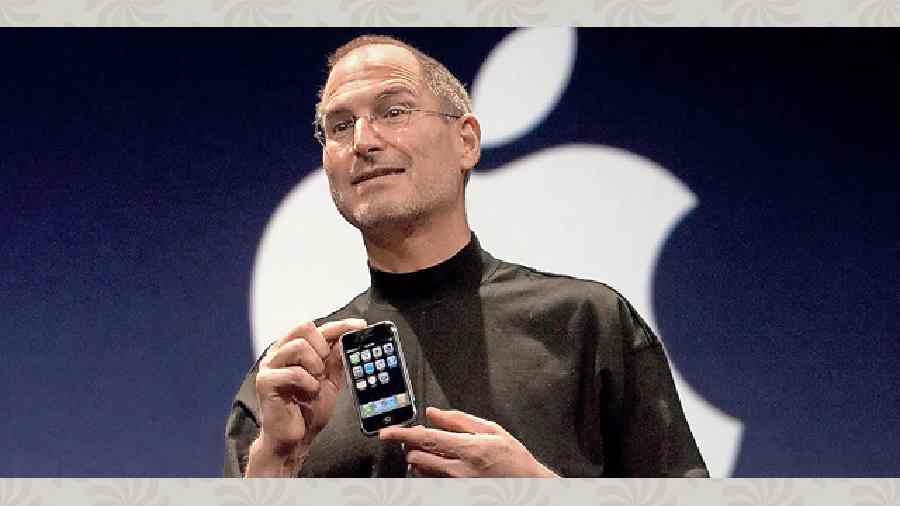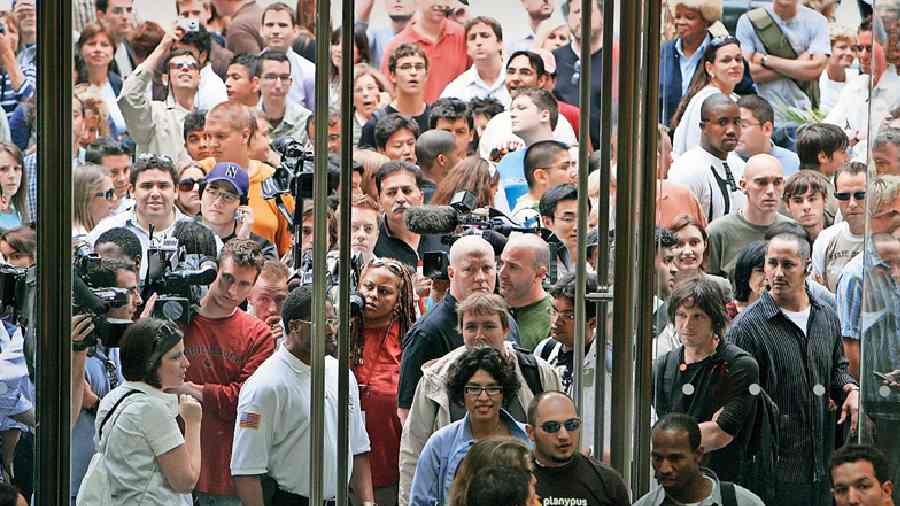Goosebumps. It’s a reaction in which muscles around hair follicles contract. In non-human mammals this happens when threat is sensed. Humans get goosebumps when we experience awe. Take it a step further: Awe helps bind us to others.
Fifteen years ago, on June 29, 2007, it was goosebumps all the way as the first iPhone went on sale, giving birth to two periods — pre-iPhone and post-iPhone, changing the course of telecommunications forever.
At age 15, there is a generation of users who don’t have any clue of the heyday of Blackberry or Nokia — the 30-something asks ‘where are they’ while the 15-something asks ‘what are they’. Yet, the truth is not even Apple could comprehend the success of the iPhone.
All in one
The iPhone project was closely associated with the iPod project. There was a time when feature phones slapped on decent quality cameras and then music features. It was clear that the likes of Samsung and Motorola were catching up with the iPod. While the iPod was about music and music alone, the mobile phone was set to be the all-in-one device. Apple had to quickly come up with a plan to ensure its lead remains. One idea was to come up with a device that was more like an iPod plus phone, complete with the classic iPod wheel. The other project that was already in motion involved an iPod with a full-screen. Meanwhile, the Mac department was working on multi-touch technology.
At Macworld on January 9, 2007, Steve Jobs made one of the most important announcements in tech history. He started by speaking of introducing three products — “A widescreen iPod with touch controls, a revolutionary mobile phone and a breakthrough Internet communications device.” Ultimately, he introduced the three-in-one product — the iPhone, which went on sale a few months later. Life changed. People were suddenly messaging and emailing a lot more.
Putting consumers first
What came next was far more revolutionary — the App Store. At first, it was a matter of 500-odd applications across various genres like gaming, education and business productivity. Frankly, Apple couldn’t comprehend the success of the App Store, which is now the livelihood for millions across the globe. The iPhone became a DJ console, a drawing board for children and an easy access point for books. Time marched on and suddenly the iPhone outpaced the point-and-shoot camera by miles. This was also the time when YouTubers found their sweet spot. They now had a device that could record high-quality videos that could be edited and stitched together on the device before being uploaded to YouTube for the whole world to see. What next? Front-facing camera on the iPhone 4 in 2010. Many wondered what good was a front-facing camera other than taking pictures of yourself. Then they discovered the power of FaceTime, which is about videoconferencing. This is also the camera that fuelled the vlogging culture.
The idea was to put consumers first. When Apple II launched in 1977, it was a computer made for consumers. Similarly, the first iPhone was designed keeping consumers in mind. It was the first phone to make listening to music, checking voicemail and browsing the web as easy as counting one, two and three.

On January 9, 2007 at the MacWorld Expo, Steve Job unveiled the first iPhone. The phone went on sale on June 29, 2007
Connected and disconnected
Hand in hand with innovation comes problems. The early problems were technical. For example, it was easy for credit cards to be charged while playing games and making in-app purchases at the hands of children. The problem was easily fixed. But what about smartphones getting in way of socialising. For sometime using Facebook on the mobile was fun but soon it was about four people at the dinner table staring at their phones, couples lying in bed lost in their own social media pool, concerts being attended with attention on the framing of the video being recorded rather than the gig itself, visiting a restaurant to get the perfect picture rather than enjoying the dinner. And this problem engulfed everyone — adults to teenagers.
Suddenly many were asking questions like ‘Are you surrounded by people who are staring at their screens instead of having conversations?’, ‘Are you obsessed with documenting everything through photographs and videos, even the mundane things in life’, and ‘Do you ever put your phone down to be with the people around you?’
These are not easy questions. The solution also came from Apple with its Screen Time option, allowing parents to control how many minutes children spend staring at the screen. It’s an option that was put to good use during the pandemic when screen time had to increase but somehow it didn’t go through the roof in many households.
Unlike some rival brands, Apple doesn’t make money by making us stare at the screen for long hours. It’s not like if you watch the screen of the iPhone for 10 hours, the company will get paid. There is no bloatware on your iPhone and you can delete any app you like. There’s no such compulsion unlike on any other phone. Perhaps what Apple is trying to say is go watch the rain for 10 minutes and not worry about the phone. Or get off social media while meeting a school friend after two decades.
During the pandemic, the iPhone has shown the world that you can work from anywhere. It has shown the world that you can capture the world around you, wherever you are. And it has also shown us that we can switch off for a few days but we will eventually come back to it because of the experience the iPhone offers. In 2007, Apple’s market capitalisation was $174.03 billion and on January 3, 2022, it hit $3 trillion dollars. That says a lot about the company and its success story.






